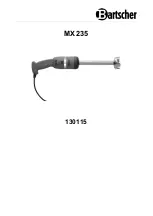
O w n e r ’ s M a n u a l
Glossary
A-1
This Glossary contains brief definitions of
many of the audio and electronic terms used in
discussions of sound mixing and recording.
Many of the terms have other meanings or
nuances or very rigorous technical definitions
that we have sidestepped here because we
figure you already have a lot on your mind. If
you’d like to get more information, see Appen-
dix K for a list of recommended books on
related subjects.
AFL
An acronym for After Fade Listen, which is
another way of saying post-fader solo function.
A/D converter (ADC)
Analog-to-digital converter, a device which
transforms incoming analog signals into digital
form.
aliasing
This is a type of distortion that can be
caused during the analog-to-digital conversion
process. The frequency of the analog signal
must be one-half or less than the sampling rate
in order to be accurately represented in the
digital domain (see
Nyquist Sampling Theorem
).
Careful design and filtering before the sampling
stage can reduce aliasing to a minimum.
assign
In sound mixers, assign means to switch or
route a signal to a particular signal path or
combination of signal paths.
attenuate
To reduce or make quieter.
automation system
A system that memorizes fader positions,
switch settings, and all send, EQ, dynamics,
and effects settings on a console. Mackie’s
Real Time OS™ automation is a powerful
system that not only memorizes static settings
(snapshot automation), but also all level
changes and switch on/off changes referenced
to time code (dynamic automation).
auxiliary
In sound mixers, supplemental equipment or
features that provide additional capabilities to
the basic system. Examples of auxiliary equip-
ment include: serial processors (equalizers,
compressors, limiters, gates) and parallel de-
vices (reverberation and delay). Most mixers
have aux send buses and aux return inputs to
accommodate auxiliary equipment.
balanced
In a classic balanced audio circuit, the two
legs of the circuit (+ and –) are isolated from
the circuit ground by exactly the same imped-
ance. Additionally, each leg may carry the sig-
nal at exactly the same level but with opposite
polarity with respect to ground. In some bal-
anced circuits, only one leg actually carries the
signal but both legs exhibit the same imped-
ance characteristics with respect to ground.
Balanced input circuits can offer excellent re-
jection of common-mode noise induced into the
line and also make proper (no ground loops)
system grounding easier. Usually terminated
with
1
⁄
4
" TRS or XLR connectors.
bandwidth
The band of frequencies that pass through a
device with a loss of less than 3 dB, expressed
in Hertz or in musical octaves. Also see
Q
.
bit
The smallest component of a digital word,
represented by either a one or a zero.
bus
An electrical connection common to three or
more circuits. In mixer design, a bus usually car-
ries signals from a number of inputs to a mixing
amplifier, just like a city bus carries people from
a number of neighborhoods to their jobs.
channel strip
The physical representation of an audio
channel on the front panel of a mixer; usually a
long, vertical strip of controls.
chorusing
An effect available in some digital delay
effects units and reverbs. Chorusing involves a
number of moving delays and pitch shifting, usu-
ally panned across a stereo field.
clipping
A cause of severe audio distortion that is the
result of excessive gain requiring the peaks of
the audio signal to rise above the capabilities of
the amplifier circuit. Seen on an oscilloscope,
the audio peaks appear flattened or clipped off.
To avoid distortion, reduce the system gain in
or before the gain stage in which the clipping
occurs. See also
headroom
.
compressor
This is used to smooth out any large tran-
sient peaks in an audio signal that might
otherwise overload your system or cause dis-
tortion. The amplitude threshold and other
parameters such as attack time, release time
and tire pressure are adjustable.
cue mix
A separate output, usually having an indi-
vidual mix and level control specifically for the
talent to monitor. The Digital 8•Bus has two
cue mix/phone outputs.
Appendix A
Glossary
Содержание 8-BUS Series
Страница 49: ...3 16 D i g i t a l 8 B u s Start Up ...
Страница 57: ...4 8 D i g i t a l 8 B u s Connections ...
Страница 77: ...5 20 D i g i t a l 8 B u s Preparing for a Session ...
Страница 177: ...7 20 D i g i t a l 8 B u s Automation ...
Страница 207: ...D 2 D i g i t a l 8 B u s Apogee UV22 ...
Страница 219: ...F 4 D i g i t a l 8 B u s Optional I O Cards ...
Страница 227: ...H 2 D i g i t a l 8 B u s Upgrading ...
Страница 232: ...J 3 O w n e r s M a n u a l Screen Shots Surround Sound Matrix Mackie FX Control Panel IVL Vocal Studio Control Panel ...
Страница 233: ...J 4 D i g i t a l 8 B u s Screen Shots Disk Manager File Menu Channel Menu Automation Menu Edit Menu Windows Menu ...
Страница 235: ...K 2 D i g i t a l 8 B u s ...
Страница 237: ...D i g i t a l 8 B u s ...
Страница 239: ...D i g i t a l 8 B u s ...
















































